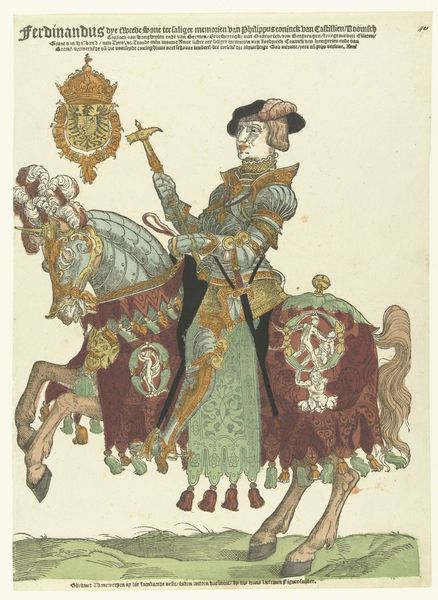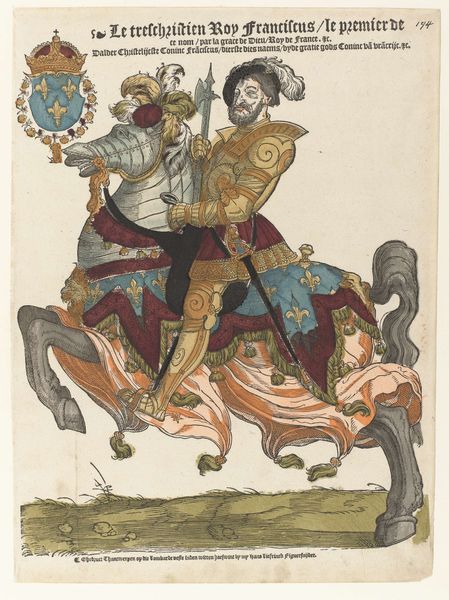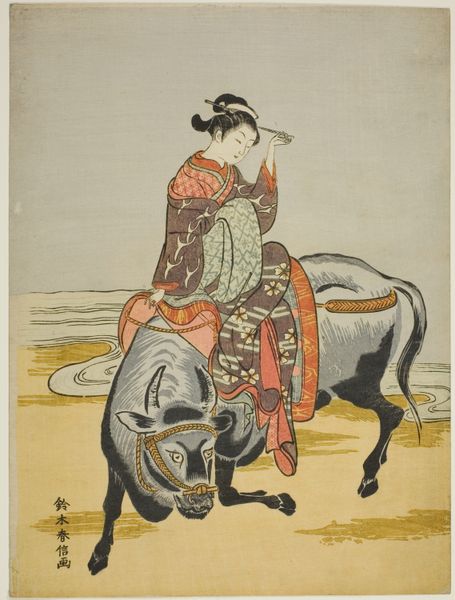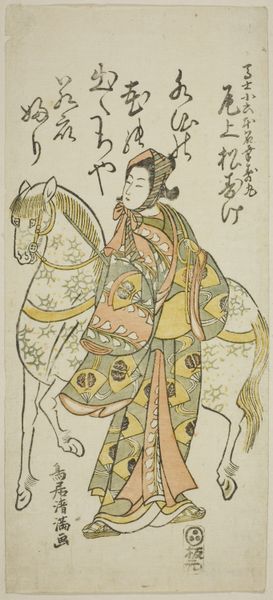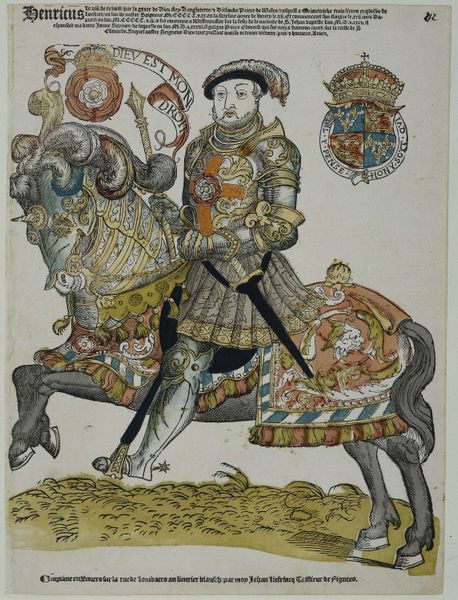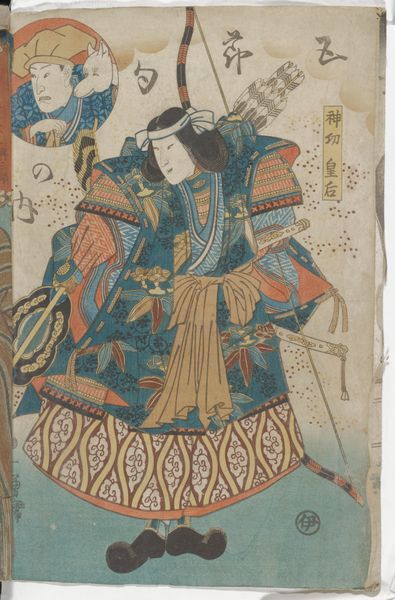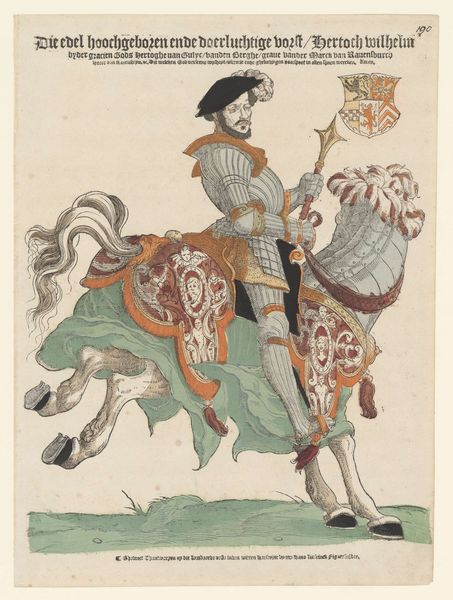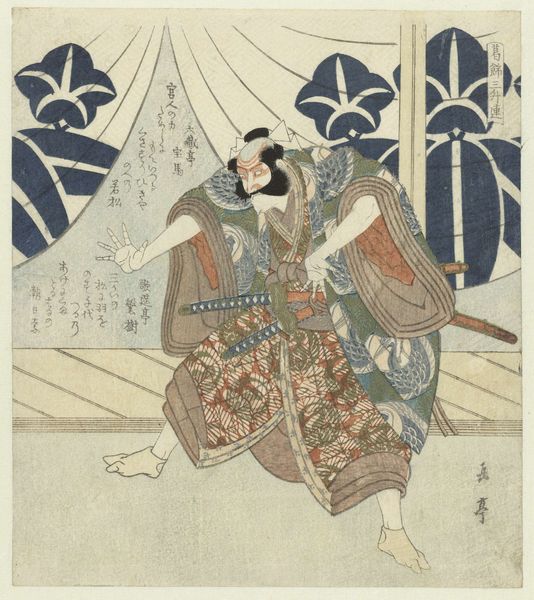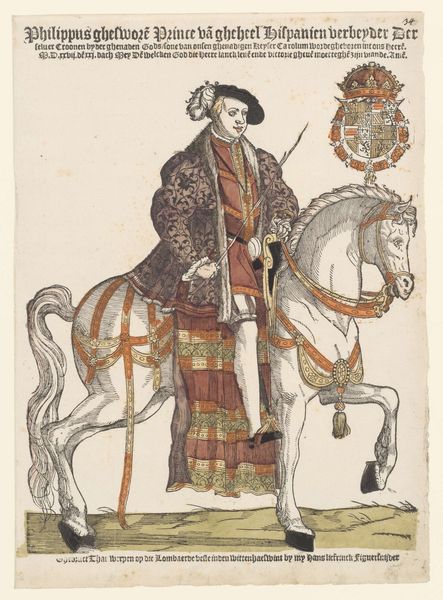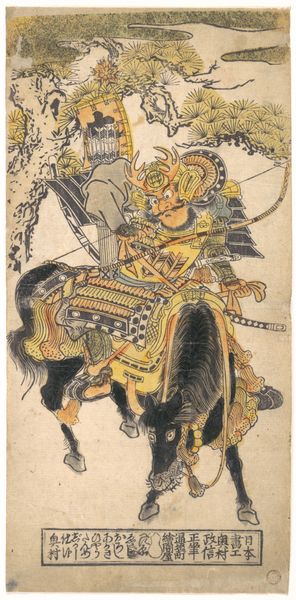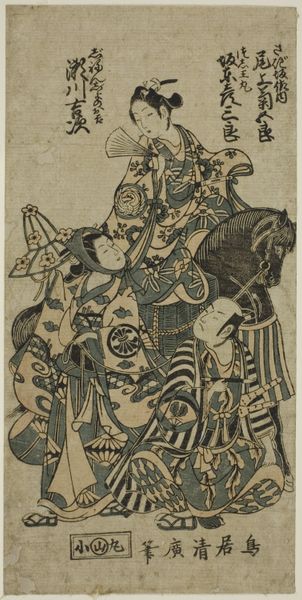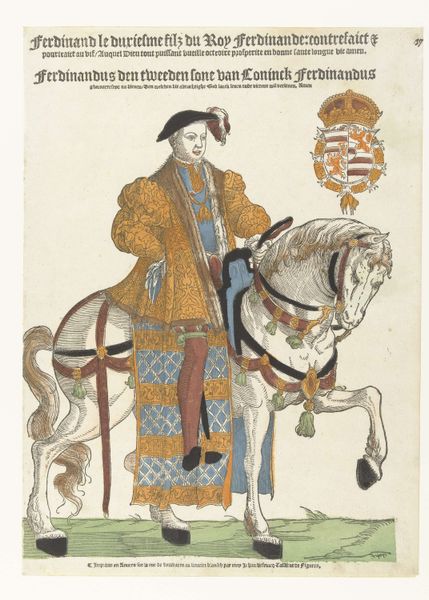
drawing, coloured-pencil
#
portrait
#
drawing
#
coloured-pencil
#
mannerism
#
figuration
#
coloured pencil
#
history-painting
#
academic-art
Dimensions: height 405 mm, width 300 mm
Copyright: Rijks Museum: Open Domain
Editor: This is Cornelis Anthonisz's "Portret van Karel V te paard," created between 1555 and 1558, currently residing in the Rijksmuseum. It’s a coloured-pencil drawing. The colors are quite vibrant, almost like a political cartoon. What can you tell us about the historical context of this portrait? Curator: This drawing offers a fascinating window into the public image of power during the 16th century. It was produced during a period when visual media played a crucial role in shaping perceptions of rulers. Given its location in the Rijksmuseum, its interesting to explore how this type of artwork contributes to the museum's broader narrative about Dutch history and identity, don't you think? Editor: Definitely. The grandeur is palpable, but I am curious, were images like this common, serving a specific purpose for the monarchy? Curator: Equestrian portraits were powerful propaganda tools. They evoke classical Roman imagery and associate the ruler with military prowess, authority, and even divine right. How does this portrayal compare to later depictions of monarchs you might have encountered in your studies? Editor: Later portraits, like those from the 17th century, seem to focus more on the individual, almost revealing aspects of their personality, whilst this artwork here emphasizes a grand idea of power. It’s about the symbolism, less so the human being, Charles V. Curator: Precisely. It highlights how the portrayal of power has shifted over time. It begs us to wonder about how cultural values shape the art we consume and, subsequently, what museums choose to display and emphasize. Editor: It is amazing to view artworks through the prism of social and political contexts that allow us to understand more about the cultural implications in different periods of history.
Comments
No comments
Be the first to comment and join the conversation on the ultimate creative platform.
